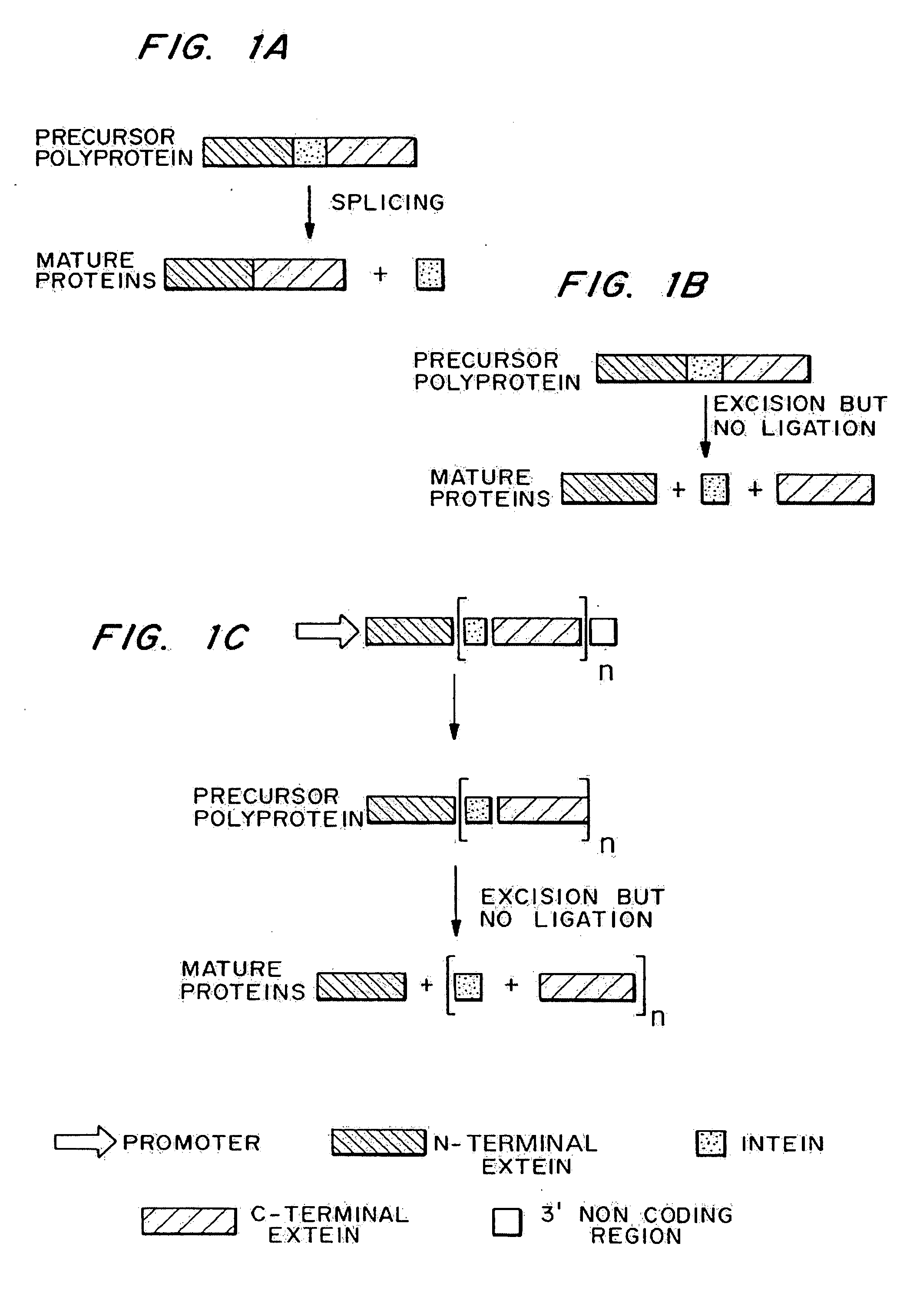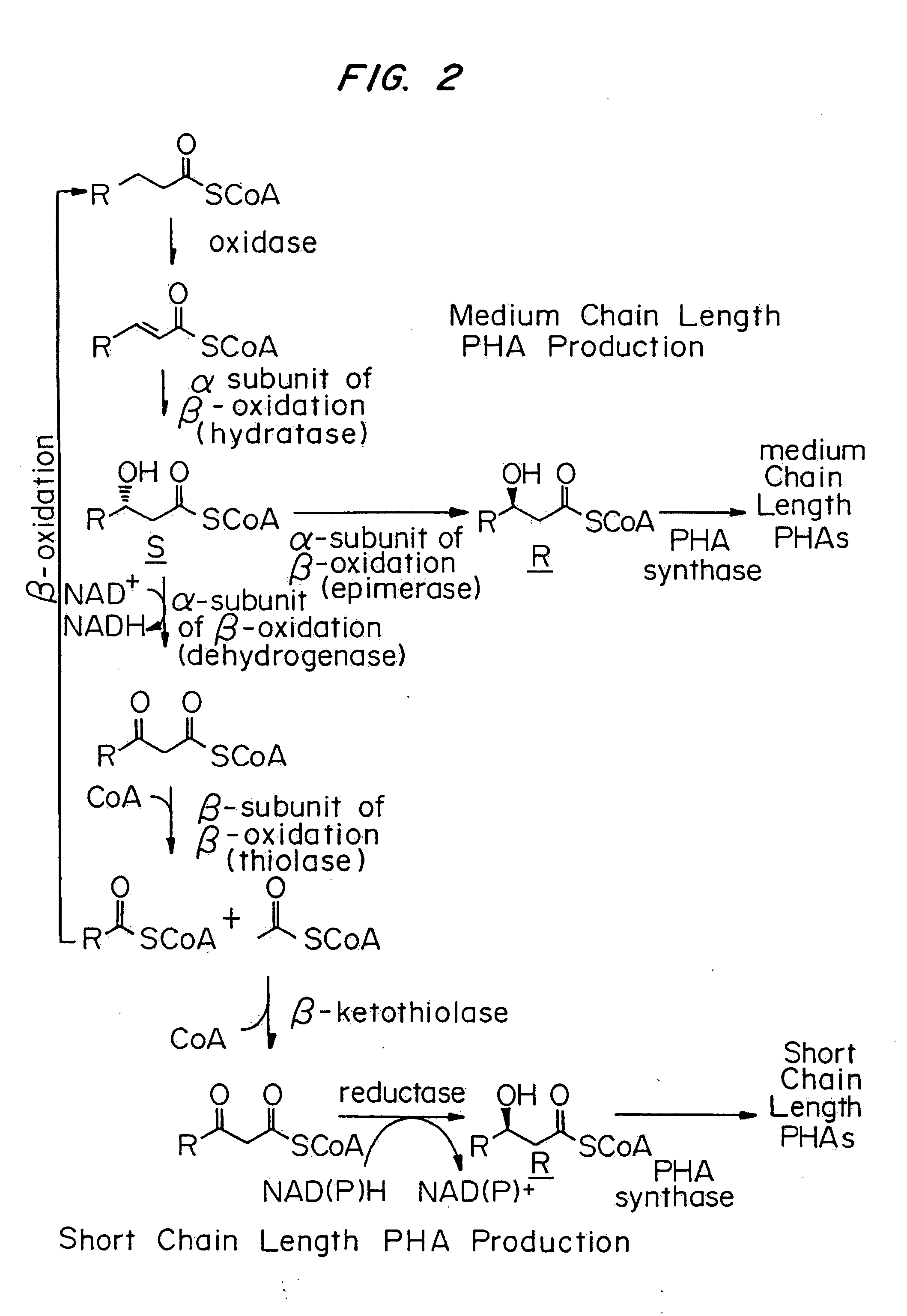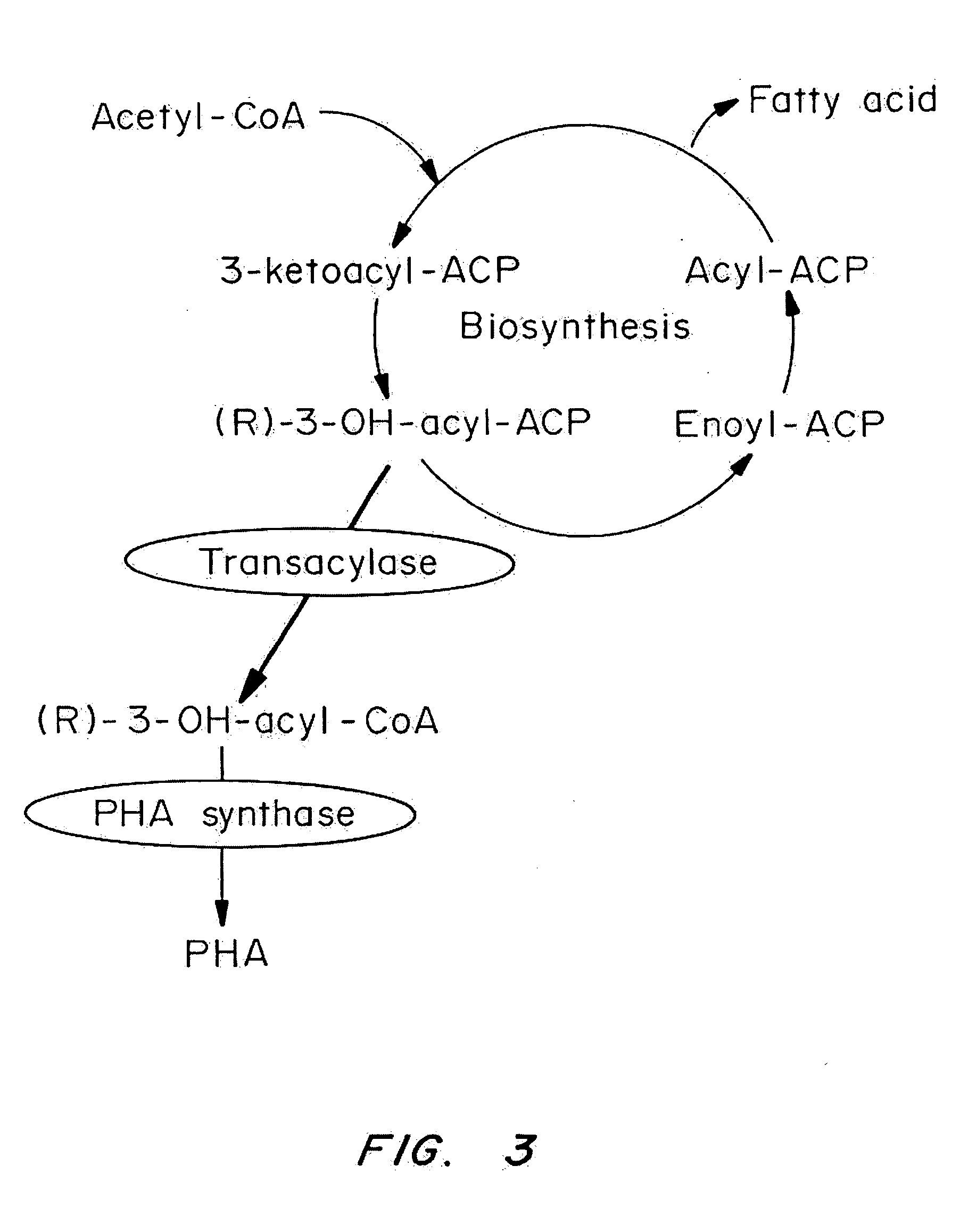Multi-gene expression constructs containing modified inteins
a technology of inteins and constructs, which is applied in the field of multi-gene expression constructs containing modified inteins, can solve the problems of significant cost and time, difficult coordination of expression, etc., and achieve the effect of preventing ligation reactions and promoting excision
- Summary
- Abstract
- Description
- Claims
- Application Information
AI Technical Summary
Benefits of technology
Problems solved by technology
Method used
Image
Examples
example 1
In vivo expression of two proteins from an intein containing multi-gene expression construct with only one promoter and one poly-adenylation signal in plant protoplast transient expression assays
[0058] A suitable construct contains the following genetic elements (FIG. 4): a promoter active in leaves such as the 35S-C4PPDK light inducible plant promoter (Sheen, J. EMBO, 1993, 12, 3497-3505); an N-terminal extein sequence encoding beta-glucuronidase (GUS) (Jefferson, R. A., Kavanagh, T. A., Bevan, M. W., EMBO J. 1987, 6, 3901-3907) fused at its C-terminus to the N-terminus of an intein sequence; an intein sequence from the Pyrococcus species GB-D polymerase (Xu, M-Q & Perler, F. B. EMBO Jounal, 1996, 15, 5146-5153) in which serine 538 has been mutated to alanine or glycine; a 5′-terminal extein sequence encoding an enhanced green fluorescent protein (EGFP; Clontech, Palo Alto, Calif.) fused at its 3′-terminus to the 5′-terminus of the intein sequence; and a polyadenylation signal.
[0...
PUM
| Property | Measurement | Unit |
|---|---|---|
| Electrical conductance | aaaaa | aaaaa |
| Electrical conductance | aaaaa | aaaaa |
| Electrical resistance | aaaaa | aaaaa |
Abstract
Description
Claims
Application Information
 Login to View More
Login to View More - R&D
- Intellectual Property
- Life Sciences
- Materials
- Tech Scout
- Unparalleled Data Quality
- Higher Quality Content
- 60% Fewer Hallucinations
Browse by: Latest US Patents, China's latest patents, Technical Efficacy Thesaurus, Application Domain, Technology Topic, Popular Technical Reports.
© 2025 PatSnap. All rights reserved.Legal|Privacy policy|Modern Slavery Act Transparency Statement|Sitemap|About US| Contact US: help@patsnap.com



